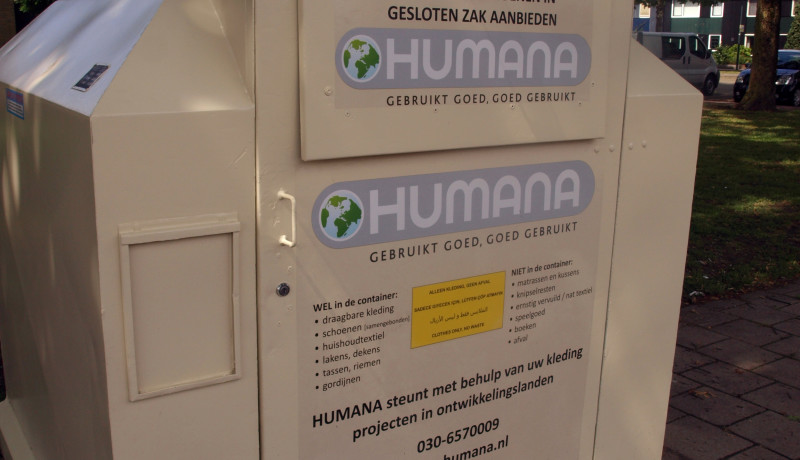Sustainability In The Fashion Industry
June 13, 2011
on
on

The fashion industry is showing a growing interest in sustainability. There are sustainable designer brands and eco fashion stores. In march the New York Times reported that the coalition of retailers, clothing manufacturers and environmental groups will join forces under the name of the Sustainable Apparel Coalition to promote sustainability in the apparel industry.
The coalition will collect data about the environmental impact of every aspect of the apparel production chain. The data will then be used to take coordinated actions to realize improvements. This means realizing a more eco-friendly manufacturing process but it also involves looking into the end of the chain: waste management.
This is where the Dutch charity organization Humana comes in. Humana collects clothing which otherwise would have been thrown away. Annually 10 million kilo’s (22 million pounds) of fabric is saved from incinerators thus preventing the emission of greenhouse gases. 80% of the textile is given a second life. The remaining 20% is recycled into new useful materials.
The clothes collected by Humana are send to Africa. A local partner-organization in Zambia has set up second-hand stores where people from the local community can buy clothing for a reasonable price. Each month a new batch of clothes arrives. Every week the prices are lowered making sure that everybody can afford to buy something. The stores offer jobs to hundreds of people and with the profit local development projects are being supported.
By giving clothes a new life instead of incinerating them, Humana contributes to reducing CO2 emission in the apparel industry. But the organization also looks at how its own processes impact the environment. For instance, the transportation of 10 million kilo’s textile has an impact of its own. The charity aims to operate carbon neutral and it monitors its own CO2 emission. Where emission can’t be reduced it is compensated by investments in a wind farm in Turkey.
The coalition will collect data about the environmental impact of every aspect of the apparel production chain. The data will then be used to take coordinated actions to realize improvements. This means realizing a more eco-friendly manufacturing process but it also involves looking into the end of the chain: waste management.
This is where the Dutch charity organization Humana comes in. Humana collects clothing which otherwise would have been thrown away. Annually 10 million kilo’s (22 million pounds) of fabric is saved from incinerators thus preventing the emission of greenhouse gases. 80% of the textile is given a second life. The remaining 20% is recycled into new useful materials.
The clothes collected by Humana are send to Africa. A local partner-organization in Zambia has set up second-hand stores where people from the local community can buy clothing for a reasonable price. Each month a new batch of clothes arrives. Every week the prices are lowered making sure that everybody can afford to buy something. The stores offer jobs to hundreds of people and with the profit local development projects are being supported.
By giving clothes a new life instead of incinerating them, Humana contributes to reducing CO2 emission in the apparel industry. But the organization also looks at how its own processes impact the environment. For instance, the transportation of 10 million kilo’s textile has an impact of its own. The charity aims to operate carbon neutral and it monitors its own CO2 emission. Where emission can’t be reduced it is compensated by investments in a wind farm in Turkey.
Read full article
Hide full article


Discussion (1 comment)